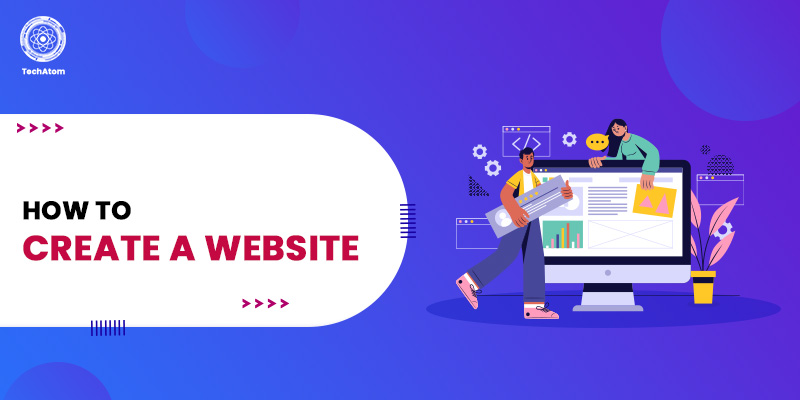Regardless of what your website is for, the way you create it matters a lot. For example, if you want your website to stand out and be unique from everyone else's, then you may want to consider hiring a professional web developer.
Professional website developers create websites based on your requirements and design plans. But these developers are expensive, plus website hosting platforms such as WordPress and Joomla are easy to handle for beginner website creators. And since these website hosting platforms provide easy-to-customize layouts, you can easily create your own kind of website in just a few steps.
Today we will share how you can create a well-built website for your new business without hiring a professional web developer. And please note that you only have 30 minutes to create a professional-looking website because it doesn't need more time.
7 Easy Steps to Create a Website for Business or Personal Use
If you know the proper steps, you can easily create a website. For example, you must determine which website hosting services you will require for your new website. We can now think of several, including Bluehost, Dreamhost, and A2 Hosting. However, deciding on a hosting provider is a separate step. To get started, we should go over the previous action items.
1. Choose a Domain
Choosing a domain name for your website is an essential step, and before you choose the domain name, you will have to consider your niche first. Your domain name should match the purpose for which you are building your project. For example, if your domain name is catfish.com, it might suggest that either your site is about cats and aquariums or people who catfish their dates.
But there are some rules about using your domain name that you should know. Number one is that you can use your own name as your domain name if it is a personal brand. Always use names that are easy to say and remember; we also recommend you use short and crisp names with no more than 14 characters. Try to use ".com" at the end of your domain name since it is easy to remember, but avoid using numbers or hyphens because it makes it harder for people to memorize your website name and address.
2. Go to a Hosting Provider for Domain Registration
After deciding on your domain name, you need to find a hosting provider and register it for that domain before it gets taken by another person. You can use Bluehost, Hostinger, Dreamhost, or any other website builder and register for the domain. Sometimes the domain is free when you opt for their hosting service, and sometimes you will have to buy the domain individually, depending on the hosting service you are working with.
3. Install WordPress with the Hosting Company
We recommend you use WordPress CMS because it is easy and extremely powerful. But depending on the hosting company you are working with, they can give you other CMS options such as Wix, Weebly, Joomla, etc. We like WP because it is easy to use and the safest and cheapest option.
You can create a WordPress account directly from your host's dashboard. But make sure to create a strong password for your new website. The stronger and more unpredictable your password is, the more secure and impossible it will be to break in. Moreover, you can access WordPress from your hosting provider's dashboard directly.
4. Customize Your Site
WordPress offers millions of themes for free, but you can also create your own theme or buy a premium one and design your website. Sites like Themeforest provide a wide range of themes for all kinds of websites, blogs, magazines, etc. And once you download or purchase a theme for any third-party website, you can add it to your own website on WordPress.
Go to Appearance > Themes > Add New Theme, and you are done. Most themes come with their own layouts, fonts, and colors. But you can also change the layouts and shades as per your needs. While adjusting the colors and fonts, you must consider a few points, such as your site’s identity and how you want your website to appear in front of the users. Choose the fonts and colors that match your brand name or personality.
5. Build an Architecture for your Website
Your website’s homepage, contact page, about page, online store (if any), blog posts section, and product sections are also a part of the architecture of your website. Your homepage is the most important part of your website because it is the best way to tell your readers what your website is about and what kind of content you publish. Also, don't forget to add a navigation menu at the top of your website from where visitors can navigate to the products section, blog posts section, or any other pages you have on your website. Please ensure that you can easily navigate your website and that it is also user-friendly.
6. Create Content
After you finish building your website, you should create and publish content regularly to engage visitors with daily information and interesting product reviews or product descriptions. Regularly publishing quality and quantity of content on your website is the most flattering way to attract and engage people’s attention. It also improves your website's visibility on the Google page rank.
7. Promote
Your website will be seen by people from all over the world. But until Google finds your website, you must make a fuss about it on social media and online forums like Quora, Reddit, etc. The more people know about your website, the better your engagement and the more successful the website development project.
Conclusion
To recap, you need to find a niche and an interesting domain name for your site; then, you must register with a web hosting platform and install WordPress or any other CMS, from which you might as well get a free domain. And then, you can customize and build your website as per your requirements and publish your niche-relevant content to the website so that visitors from all over the world can find you. If you need any help with website development, you can ask us any questions in the comment box below.
People are also reading:




